- Why Boosting Your Onion and Garlic Rooting Rate is Important
- Increase Disease Resistance in Your Onion and Garlic Plants
- 1. Choose Disease-Resistant Varieties
- 2. Rotate Crops
- 3. Improve Soil Health
- 4. Practice Good Sanitation
- 5. Provide Adequate Water and Fertilizer
- 6. Monitor for Pests and Diseases
- 7. Consider Natural Disease Controls
- Factors Affecting Onion and Garlic Rooting Rate
- 1. Soil Quality
- 2. Temperature
- 3. Watering
- 4. Nutrient Availability
- 5. Planting Depth
- 6. Disease Resistance
- 7. Plant Health
- Conclusion
- Choosing the Right Soil for Maximum Rooting
- 1. Well-Draining Soil
- 2. pH Level
- 3. Organic Matter
- 4. Nutrient Content
- 5. Disease Resistance
- 6. Soil Texture
- 7. Soil Moisture
- Optimal Watering Techniques for Improved Rooting
- 1. Watering frequency:
- 2. Timing of watering:
- 3. Watering methods:
- 4. Mulching:
- 5. Monitoring soil moisture:
- The Importance of Proper Fertilization in Root Development
- Nutrient Supply
- Improved Root Growth
- Disease Resistance
- Increased Yield and Quality
- Fertilizer Application
- Conclusion
- Tips for Enhancing Onion and Garlic Disease Resistance
- 1. Choose Resistant Varieties
- 2. Practice Crop Rotation
- 3. Improve Soil Drainage
- 4. Use Disease-Free Planting Material
- 5. Monitor and Control Weeds
- 6. Provide Adequate Spacing
- 7. Practice Good Sanitation
- “Question-Answer”
- Why is it important to boost the rooting rate and disease resistance of onion and garlic?
- How can I boost the rooting rate of onion and garlic?
- What are some natural methods to increase disease resistance in onion and garlic?
- Is it necessary to use chemical pesticides to protect onion and garlic from diseases?
- Can I use garlic and onion bulbs from the grocery store for planting?
- Do onion and garlic require a lot of maintenance to boost rooting rate and disease resistance?
- Are there any specific tips for boosting the rooting rate and disease resistance of garlic?
- “Video” Rooting and Growing Garlic Plant From Clove (42 Days Time Lapse)
Onions and garlic are popular kitchen staples used to add flavor and aroma to a variety of dishes. But did you know that these aromatic bulbs also have many health benefits? Both onions and garlic are rich in antioxidants and can help boost the immune system, lower blood pressure, and reduce the risk of certain types of cancer. However, growing onions and garlic successfully requires some knowledge and care.
In this article, we will explore some tips and tricks to help you boost the rooting rate and disease resistance of your onions and garlic. One of the key factors in growing these bulbs successfully is providing them with the right conditions for rooting. This includes choosing the right variety, planting at the right time, and providing adequate moisture and nutrients.
When it comes to choosing the right variety of onions and garlic, it’s important to consider your climate and growing conditions. Some varieties are more suited to colder climates, while others thrive in warmer regions. Additionally, certain varieties have a better resistance to diseases and pests, which can help ensure a healthier crop.
Planting time is another crucial factor in the success of your onion and garlic crop. Onions and garlic should be planted in the fall or early spring, depending on your location and the variety you choose. It’s important to plant them in well-draining soil to prevent moisture-related diseases. Additionally, ensure that the soil is rich in organic matter and nutrients, as this will help promote rooting and overall plant health.
To further boost the rooting rate and disease resistance of your onions and garlic, make sure to provide them with the right amount of moisture. Onions and garlic prefer slightly moist soil, so be careful not to over-water them. Mulching can help retain moisture in the soil and also suppress weeds, which can compete with your plants for nutrients.
In conclusion, growing onions and garlic can be a rewarding and flavorful endeavor. By choosing the right variety, planting at the right time, and providing the proper care, you can boost the rooting rate and disease resistance of your bulbs. So go ahead and start growing your own supply of these aromatic and healthy kitchen staples!
Why Boosting Your Onion and Garlic Rooting Rate is Important
The rooting rate of onions and garlic refers to the success rate at which the roots develop and grow. It plays a crucial role in the overall health and productivity of these plants. Boosting the rooting rate is important for several reasons:
- Improved Nutrient Uptake: A higher rooting rate ensures that the plants can absorb nutrients more efficiently. When the roots are well-developed and extensive, they have a larger surface area to absorb water and essential nutrients from the soil. This leads to healthier plants with better growth and higher yields.
- Enhanced Disease Resistance: Healthy and strong root systems help plants fend off diseases and infections more effectively. When the roots are well-established, they act as a barrier, preventing pathogens from entering the plant. Additionally, plants with robust root systems are better able to tolerate environmental stressors, such as drought or extreme temperatures, which can make them less susceptible to diseases.
- Faster Establishment: A high rooting rate allows onions and garlic to establish themselves more quickly in the soil. This is particularly important for crops that have a limited growing season, as it allows them to utilize the available resources efficiently and grow rapidly. Faster establishment also reduces the risk of weed competition and enhances the overall competitiveness of the plants.
- Higher Yield Potential: When the rooting rate is enhanced, the plants are able to produce more shoots, resulting in higher yields. As the roots better capture nutrients and water, the plants have more resources available for growth and development. This leads to larger bulbs and cloves, which are the edible portions of the onion and garlic plants.
Overall, boosting the rooting rate of onions and garlic is crucial for achieving healthy and productive crops. It not only improves nutrient uptake and disease resistance but also enhances establishment and increases the potential for higher yields. By promoting a strong and well-developed root system, growers can significantly improve the overall performance of their onion and garlic crops.
Increase Disease Resistance in Your Onion and Garlic Plants
Keeping your onion and garlic plants healthy and disease-free is essential for a successful harvest. Fortunately, there are several strategies you can use to increase their disease resistance.
1. Choose Disease-Resistant Varieties
When selecting onion and garlic varieties to plant, look for those that are known to have high disease resistance. Disease-resistant varieties are bred to withstand specific pathogens and are less likely to be affected by common diseases such as onion downy mildew and garlic rust. Check with your local agricultural extension office or seed supplier for recommendations on disease-resistant varieties.
2. Rotate Crops
Crop rotation is an important practice that helps disrupt the life cycles of pathogens and reduces the buildup of disease-causing organisms in the soil. Avoid planting onions and garlic in the same location every year. Instead, rotate them with crops from different plant families. Ideally, it is best to wait at least three years before replanting onions and garlic in the same area.
3. Improve Soil Health
Healthy soil is the foundation of healthy plants. Prior to planting, amend the soil with organic matter such as compost or well-rotted manure to improve its structure and fertility. A well-drained soil with good nutrient content promotes strong root development and helps plants resist diseases. Test the soil pH and adjust it to the optimal range for onions and garlic, which is typically between 6.0 and 7.5.
4. Practice Good Sanitation
Proper sanitation practices can help prevent the spread of diseases in your onion and garlic plants. Remove and destroy any infected or diseased plant debris, including leaves, bulbs, and roots. Do not compost these materials, as they may still harbor pathogens. Clean and sterilize your gardening tools regularly to prevent cross-contamination between plants.
5. Provide Adequate Water and Fertilizer
Onions and garlic need consistent moisture and proper nutrition to stay healthy and resist diseases. Water the plants regularly, providing enough moisture to keep the soil evenly moist but not waterlogged. Applying a balanced fertilizer, rich in nitrogen, phosphorus, and potassium, will help promote strong plant growth and enhance disease resistance.
6. Monitor for Pests and Diseases
Regularly inspect your onion and garlic plants for signs of pests and diseases. Early detection is key to preventing the spread of diseases. Common diseases that affect onions and garlic include fungal infections, bacterial diseases, and viral infections. If you notice any symptoms, such as yellowing leaves, wilting, or discoloration, take immediate action to control the problem.
7. Consider Natural Disease Controls
In addition to the above strategies, there are natural disease control methods you can employ to enhance the disease resistance of your onion and garlic plants. For example, using beneficial insects like ladybugs and lacewings can help control aphids and other pests that transmit diseases. Neem oil and other organic fungicides can be used to prevent and control fungal diseases.
By implementing these strategies, you can increase the disease resistance of your onion and garlic plants, resulting in healthier plants and a bountiful harvest.
Factors Affecting Onion and Garlic Rooting Rate
When it comes to increasing the rooting rate of onions and garlic, several factors come into play. These factors can greatly affect the success of rooting and overall plant health. Understanding and addressing these factors can help boost the rooting rate and enhance the disease resistance of these crops.
1. Soil Quality
The quality of the soil has a significant impact on the rooting rate of onions and garlic. Well-draining soil with good fertility and organic matter content is ideal for their growth. The soil pH should be around 6.0 to 7.0 for optimal rooting. Testing the soil and making necessary amendments can greatly improve the rooting rate.
2. Temperature
Temperature plays a crucial role in determining the rooting rate of onions and garlic. Cool temperatures (15-20°C) are generally favorable for root development, while excessively high or low temperatures can hinder rooting. Maintaining appropriate temperature ranges during the growing season is essential for maximizing rooting rate.
3. Watering
Proper watering practices are vital for promoting root development in onions and garlic. Over-watering can lead to root rot and poor rooting, while insufficient watering can result in stunted roots. Consistently providing adequate moisture without waterlogging is crucial for achieving a high rooting rate.
4. Nutrient Availability
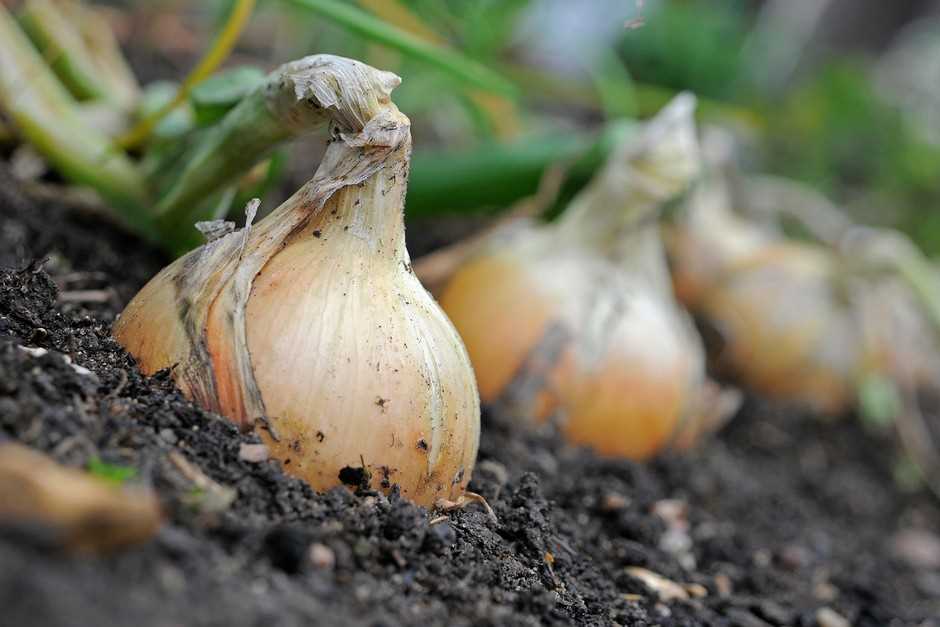
Onions and garlic require a balanced supply of essential nutrients for optimal rooting. Nitrogen, phosphorus, and potassium are crucial elements that support root development. Additionally, micronutrients such as iron, zinc, and manganese are also important. Regular soil testing and appropriate fertilization can ensure the availability of necessary nutrients for enhanced rooting.
5. Planting Depth
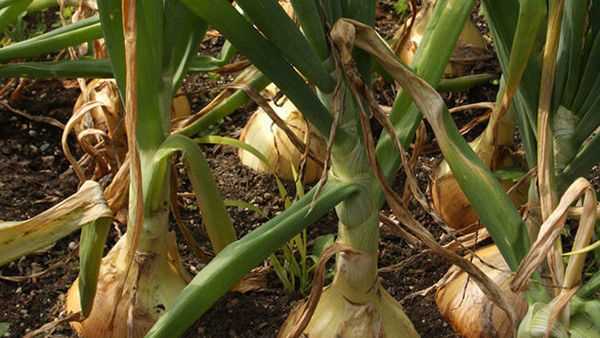
The depth at which onion and garlic bulbs are planted can impact their rooting rate. Planting these crops too shallow or too deep can result in poor root development. The general rule of thumb is to plant them at a depth of about 2-3 times their diameter. This allows for proper root anchorage and expansion.
6. Disease Resistance
Onion and garlic varieties that possess inherent disease resistance have a greater chance of achieving a high rooting rate. These resistant varieties are less susceptible to common root diseases such as onion white rot and garlic rust. Choosing disease-resistant cultivars and following proper sanitation practices can help improve the rooting rate.
7. Plant Health
Overall plant health greatly influences the rooting rate of onions and garlic. Healthy plants with vigorous foliage and minimal pest or disease infestation are more likely to establish strong and healthy root systems. Regular monitoring, timely pest and disease control, and proper cultural practices contribute to plant health and ultimately improve rooting rate.
Conclusion
Boosting the rooting rate and disease resistance of onions and garlic requires a thorough understanding of the various factors that affect these processes. By considering factors such as soil quality, temperature, watering, nutrient availability, planting depth, disease resistance, and plant health, growers can optimize the rooting rate and enhance the overall success of their onion and garlic crops.
Choosing the Right Soil for Maximum Rooting
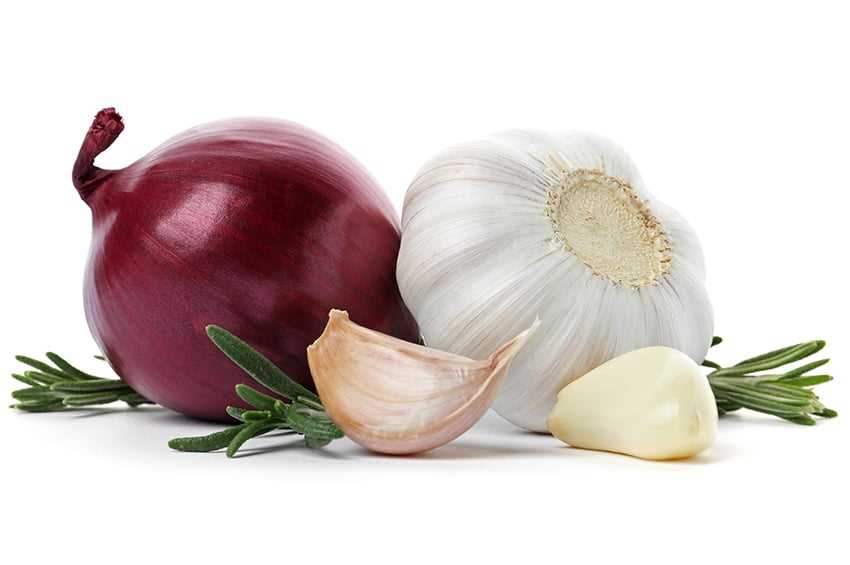
When it comes to growing onions and garlic, choosing the right soil is crucial for maximizing rooting and promoting healthy plant growth. The soil composition can greatly affect the development of the roots, nutrient uptake, and disease resistance. Here are some factors to consider when selecting the best soil for your onion and garlic plants:
1. Well-Draining Soil
Onions and garlic plants prefer well-draining soil to avoid waterlogged conditions that can lead to root rot and other diseases. Look for soil with good drainage capabilities, such as sandy loam or loamy soil. Avoid heavy clay soils that tend to retain too much water.
2. pH Level
The pH level of the soil plays a crucial role in nutrient availability and root development. Onions and garlic prefer slightly acidic to neutral soil with a pH range of 6.0 to 7.0. Test the soil pH using a soil testing kit and amend it accordingly with lime to raise pH or sulfur to lower pH.
3. Organic Matter
Adding organic matter to the soil can significantly improve its texture, moisture-retention abilities, and nutrient content. Mix in compost, well-rotted manure, or other organic materials to enhance the soil structure. This will provide a favorable environment for root growth and nutrient uptake.
4. Nutrient Content
Onions and garlic plants require a well-balanced supply of nutrients for optimal growth and development. Prior to planting, incorporate a balanced fertilizer into the soil to ensure it has sufficient levels of essential nutrients like nitrogen, phosphorus, and potassium.
5. Disease Resistance
Choosing a soil with good disease resistance can help prevent common onion and garlic diseases like fusarium basal rot and white rot. Look for soil that has not been used to grow allium crops for at least three to four years to reduce the risk of soil-borne diseases.
6. Soil Texture
The texture of the soil affects the root penetration and aeration. Aim for a soil texture that is loose and crumbly to allow roots to penetrate easily and promote good airflow. Avoid compacted or heavy soils that can restrict root growth.
7. Soil Moisture
Onions and garlic require consistent, but not excessive, soil moisture levels. The soil should be moist, but not waterlogged, to prevent root rot. Make sure the soil has good water-holding capacity while still allowing excess water to drain away.
By considering these factors and selecting the right soil, you can provide optimal conditions for maximum rooting, disease resistance, and healthy onion and garlic plants.
Optimal Watering Techniques for Improved Rooting
Proper watering techniques are crucial when it comes to improving rooting in onion and garlic plants. Too much or too little water can negatively impact the development of strong and healthy roots, leading to reduced overall growth and disease susceptibility. Follow these optimal watering techniques to ensure improved rooting:
1. Watering frequency:
Onion and garlic plants require consistent moisture in the soil, but overwatering should be avoided. Water the plants deeply and thoroughly, allowing the soil to dry slightly between each watering. This promotes root growth, as the roots will search for water deeper in the soil. Aim to provide water once or twice a week, depending on the local climate conditions and the moisture retention capacity of the soil.
2. Timing of watering:
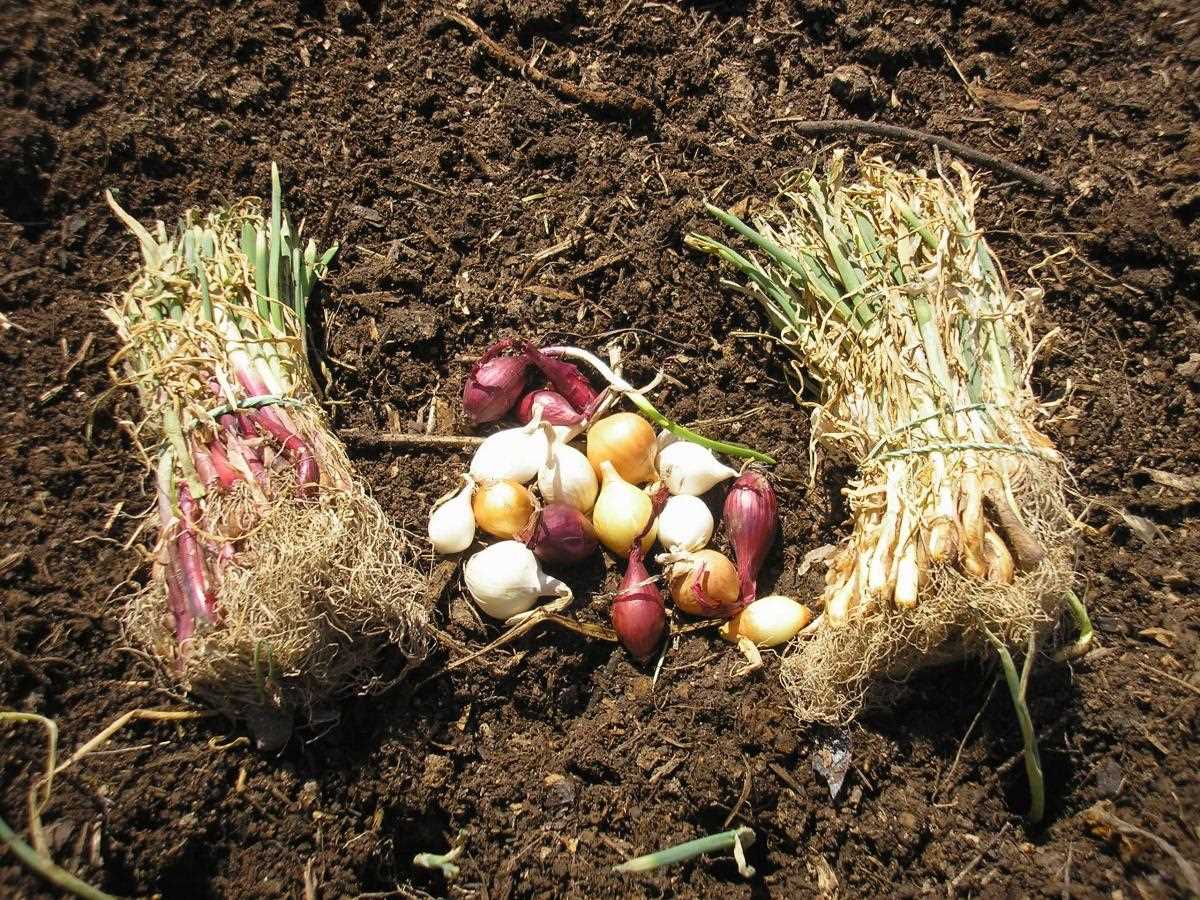
Water the plants early in the morning or late in the evening when the temperature is cooler. This helps to minimize water evaporation and ensure that the roots have sufficient time to absorb the moisture before the heat of the day. Avoid watering during the peak heat hours of the day, as the water will evaporate quickly and may not reach the root zone effectively.
3. Watering methods:
Use a soaker hose or drip irrigation system to water onion and garlic plants. These methods deliver water directly to the soil, minimizing water waste and reducing the risk of wetting the foliage, which can lead to fungal diseases. Avoid using overhead sprinklers, as they can cause water to splash onto the leaves and create a favorable environment for diseases.
4. Mulching:
Applying a layer of organic mulch, such as straw or wood chips, around the base of the plants can help retain soil moisture and reduce evaporation. Mulching also helps to prevent weed growth, which can compete with the onion and garlic plants for water and nutrients.
5. Monitoring soil moisture:
Regularly check the soil moisture level to ensure it is neither too dry nor too wet. Insert your finger into the soil up to the second knuckle. If it feels dry at that depth, it’s time to water. If the soil feels wet or moist, hold off watering until it dries out slightly. Monitoring soil moisture is essential for maintaining optimal watering practices.
By implementing these optimal watering techniques, you can improve rooting in your onion and garlic plants, leading to enhanced disease resistance and overall plant health.
The Importance of Proper Fertilization in Root Development
Proper fertilization plays a crucial role in the development of onion and garlic roots. It provides the necessary nutrients for root growth, enhances disease resistance, and improves overall plant health. Here are the key reasons why proper fertilization is essential:
Nutrient Supply
Fertilizers contain essential macronutrients such as nitrogen (N), phosphorus (P), and potassium (K), and micronutrients like zinc (Zn), iron (Fe), and manganese (Mn). These nutrients are vital for root development. Nitrogen promotes leaf and shoot growth, phosphorus aids in root formation, and potassium contributes to overall plant health. Micronutrients play a vital role in enzyme activation and metabolic processes, supporting overall plant growth.
Improved Root Growth
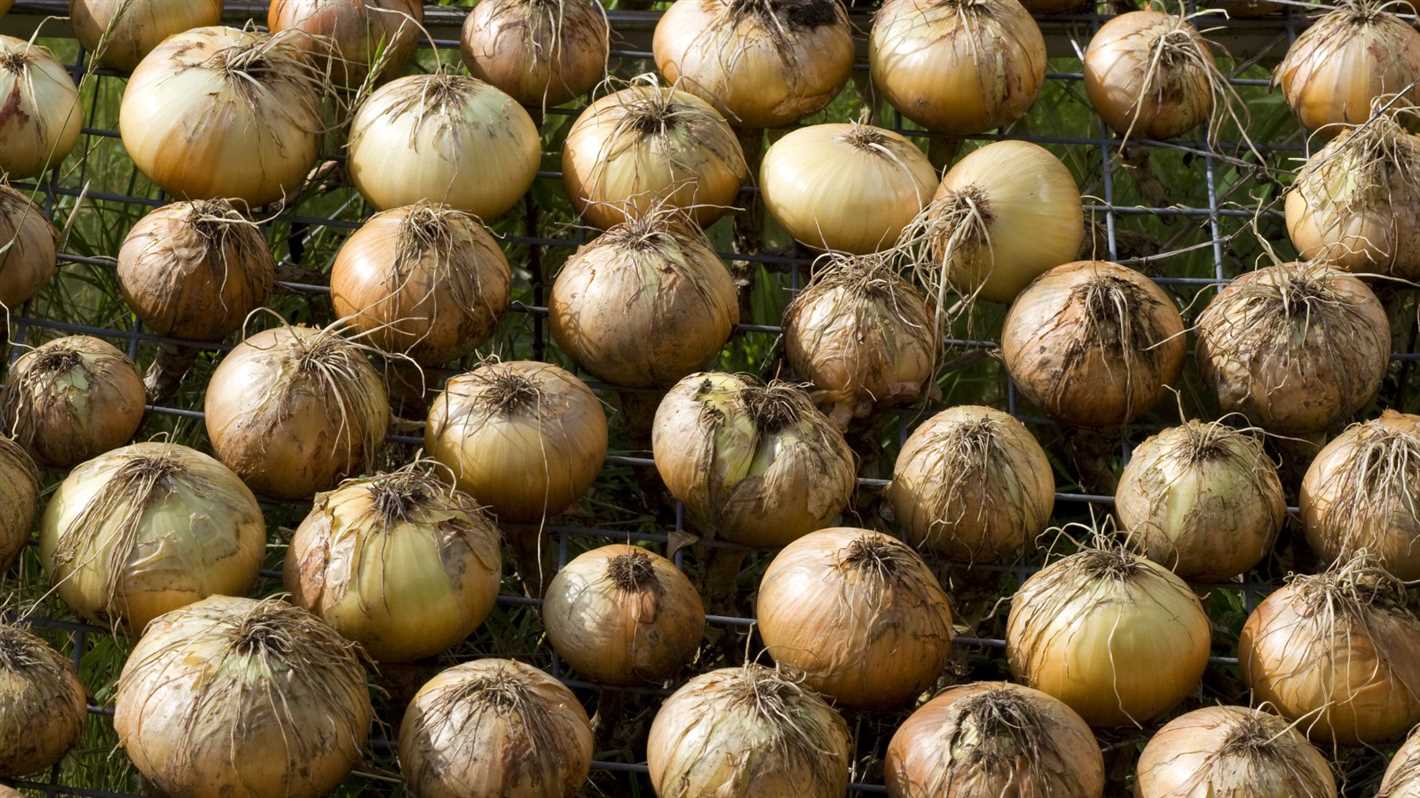
Proper fertilization enhances root growth and development. Balanced nutrients encourage the formation of healthy, robust roots, leading to improved water and nutrient absorption. Stronger roots provide a stable foundation for plants, ensuring they can sufficiently support the above-ground growth and tolerate environmental stressors.
Disease Resistance
Healthy, well-developed roots improve disease resistance in onion and garlic plants. Adequate fertilization strengthens the plant’s immune system, making it more capable of fighting off diseases and pests. Additionally, nutrients such as calcium (Ca) and magnesium (Mg) can correct nutrient deficiencies that can make plants more susceptible to diseases.
Increased Yield and Quality
Proper fertilization directly impacts the yield and quality of onion and garlic crops. A well-balanced nutrient supply ensures optimal growth and development, resulting in higher yields and improved crop quality. Inadequate fertilization can lead to stunted growth, reduced yields, and lower-quality produce.
Fertilizer Application
It is important to apply fertilizers at the right time and in the correct amounts. Before planting, mix a slow-release fertilizer into the soil to provide a continuous nutrient supply. During the growing season, apply side-dressings of nitrogen-based fertilizers to meet the plants’ increasing nutrient demands. Regular soil testing can help determine the precise nutrient requirements for optimal growth.
Conclusion
Proper fertilization is critical for onion and garlic root development. It provides the necessary nutrients, supports healthy root growth, improves disease resistance, and increases yield and quality. By understanding the importance of proper fertilization and applying the right fertilizers at the right time, growers can achieve healthier plants and better overall crop success.
Tips for Enhancing Onion and Garlic Disease Resistance
Onions and garlic are susceptible to a variety of diseases, which can lead to significant losses in yield and quality. However, there are several measures you can take to enhance the disease resistance of your onion and garlic crops. Here are some useful tips:
1. Choose Resistant Varieties
One of the most effective ways to enhance disease resistance in onions and garlic is to choose varieties that are known to be resistant to common diseases. Look for varieties that have been specifically bred for resistance to diseases such as onion downy mildew, white rot, and garlic rust.
2. Practice Crop Rotation
Rotate your onion and garlic crops with unrelated crops each season to reduce the buildup of soil-borne pathogens. Avoid planting onions and garlic in the same location for consecutive years, as this can increase the risk of diseases such as onion smut and basal rot.
3. Improve Soil Drainage
Onions and garlic prefer well-drained soil, as excessive moisture can lead to root rot and other fungal diseases. Improve soil drainage by adding organic matter such as compost or well-rotted manure to the planting area.
4. Use Disease-Free Planting Material
Start with disease-free onion sets or garlic bulbs to prevent the introduction of diseases into your garden. Inspect the planting material carefully for any signs of disease or damage before planting.
5. Monitor and Control Weeds
Weeds not only compete with onions and garlic for nutrients and water but can also harbor pathogens that can spread to your crops. Keep the planting area free of weeds by regular weeding and the use of mulch.
6. Provide Adequate Spacing
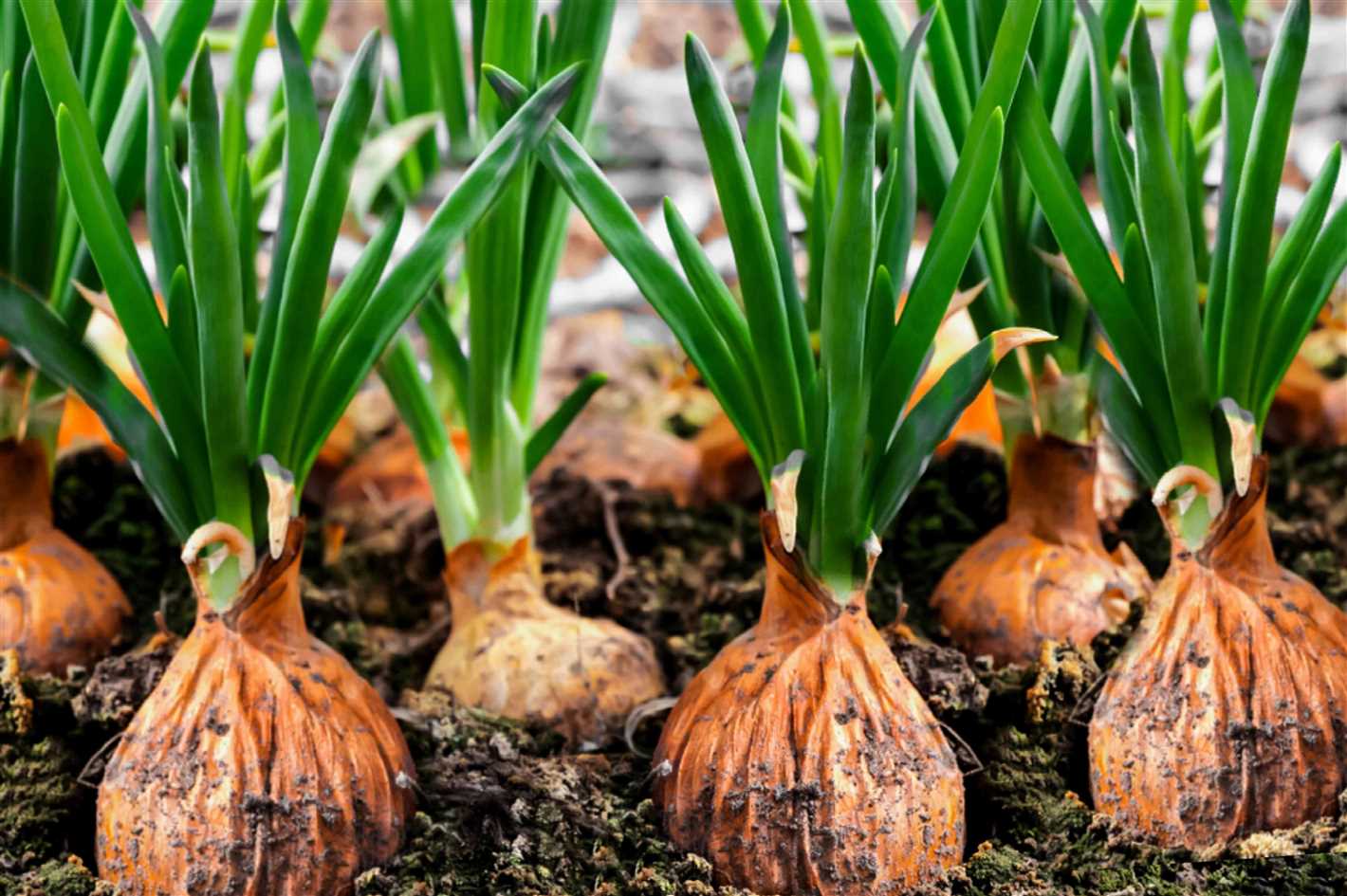
Proper spacing between onion and garlic plants allows for better air circulation, which reduces humidity and helps prevent the development of fungal diseases. Follow the recommended spacing guidelines for the specific crop you are growing.
7. Practice Good Sanitation
Remove and destroy any infected or diseased plant debris promptly to prevent the spread of diseases. Clean and disinfect gardening tools and equipment between uses to avoid cross-contamination.
By following these tips, you can enhance the disease resistance of your onion and garlic crops, leading to healthier plants and better yields.
“Question-Answer”
Why is it important to boost the rooting rate and disease resistance of onion and garlic?
Boosting the rooting rate and disease resistance of onion and garlic is important because it leads to healthier and more productive plants. When the rooting rate is high, the plants can absorb more nutrients and water from the soil, leading to better growth and yield. Disease resistance helps protect the plants from common diseases, reducing the need for chemical interventions and increasing overall plant health.
How can I boost the rooting rate of onion and garlic?
To boost the rooting rate of onion and garlic, you can start by using healthy and disease-free bulbs for planting. Proper soil preparation is also important, ensuring good drainage and aeration. Adding organic matter, such as compost or well-rotted manure, can help improve soil structure. Additionally, applying a root growth hormone can stimulate root development and increase the rooting rate.
What are some natural methods to increase disease resistance in onion and garlic?
There are several natural methods to increase disease resistance in onion and garlic. One is to plant disease-resistant varieties, which have been selectively bred to have higher resistance to common diseases. Another method is to practice crop rotation, as this can help break the disease cycle by preventing the buildup of pathogens in the soil. Applying organic fungicides and biostimulants, such as seaweed extracts or beneficial microorganisms, can also enhance disease resistance.
Is it necessary to use chemical pesticides to protect onion and garlic from diseases?
Using chemical pesticides is not necessary to protect onion and garlic from diseases. While chemical pesticides can be effective in controlling diseases, there are also many natural and organic methods available. These include practicing good hygiene in the garden, such as removing infected plant material, and using natural fungicides and biological controls, which target specific pathogens. Implementing cultural practices, such as crop rotation and proper irrigation, can also help prevent disease outbreaks.
Can I use garlic and onion bulbs from the grocery store for planting?
Using garlic and onion bulbs from the grocery store for planting is possible, but it may not be the best option. Supermarket garlic and onion bulbs are often treated with growth inhibitors to prevent sprouting. These bulbs may also be older and more prone to disease. It is better to source bulbs from a reputable nursery or seed supplier, as they will be specifically grown for planting and have a higher chance of rooting successfully and being disease-free.
Do onion and garlic require a lot of maintenance to boost rooting rate and disease resistance?
While onion and garlic do require some maintenance to boost rooting rate and disease resistance, the overall effort is not excessive. Providing proper soil preparation, regular watering, and applying organic fertilizers can help promote rooting. Disease resistance can be enhanced by implementing cultural practices like crop rotation and practicing good garden hygiene. With proper care, onion and garlic can thrive and achieve high rooting rates and disease resistance with relatively moderate maintenance.
Are there any specific tips for boosting the rooting rate and disease resistance of garlic?
Yes, there are specific tips for boosting the rooting rate and disease resistance of garlic. One tip is to plant the garlic cloves with the pointed end facing up, as this is where the shoots will emerge. It is also important to provide well-drained soil and avoid overwatering, as garlic bulbs are prone to rot in soggy conditions. Applying a balanced organic fertilizer at planting time and supplementing with additional organic fertilizer during the growing season can also boost rooting and overall plant health.







